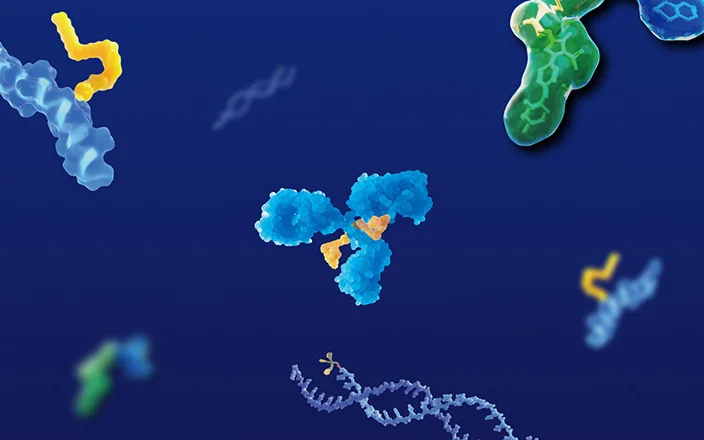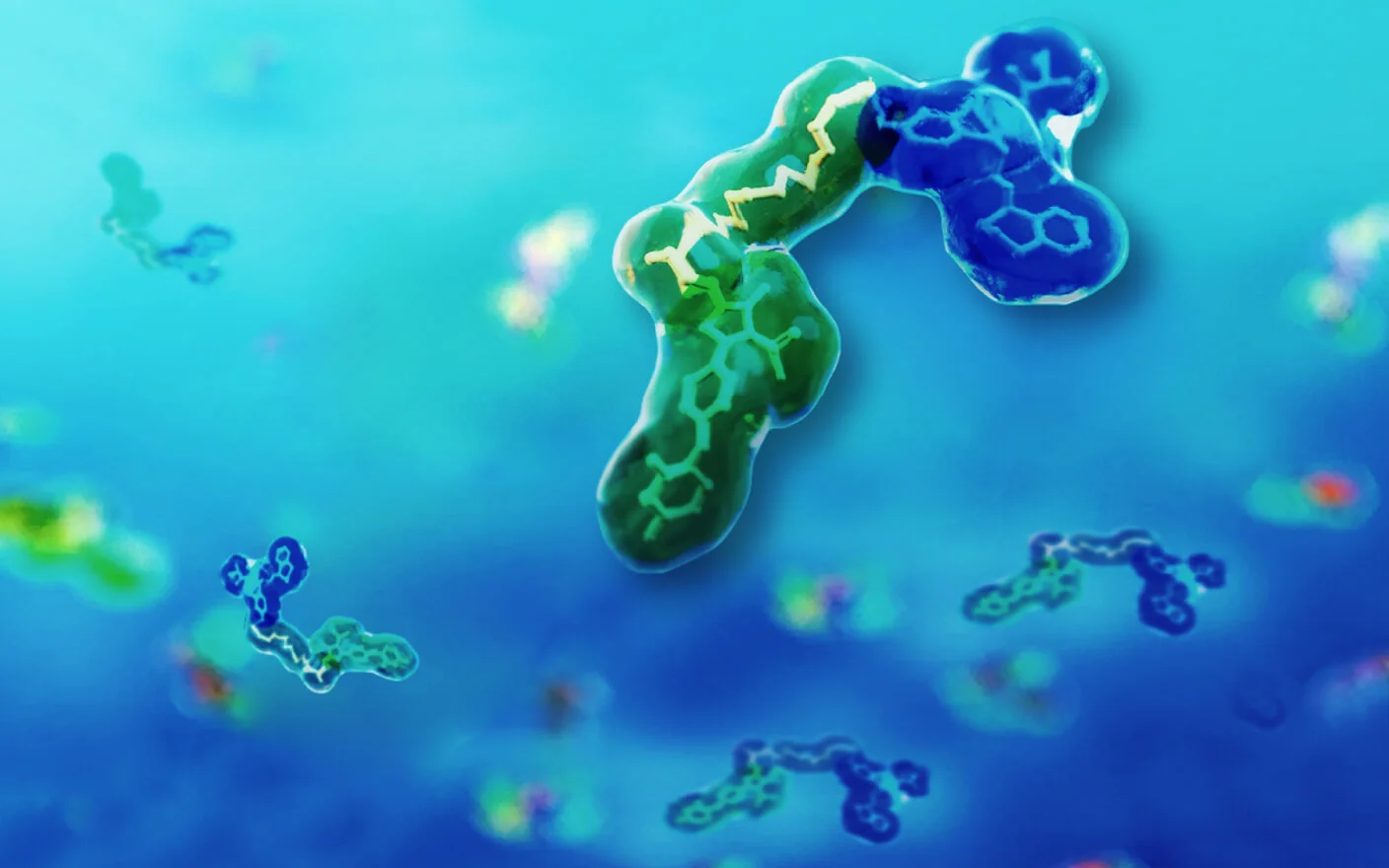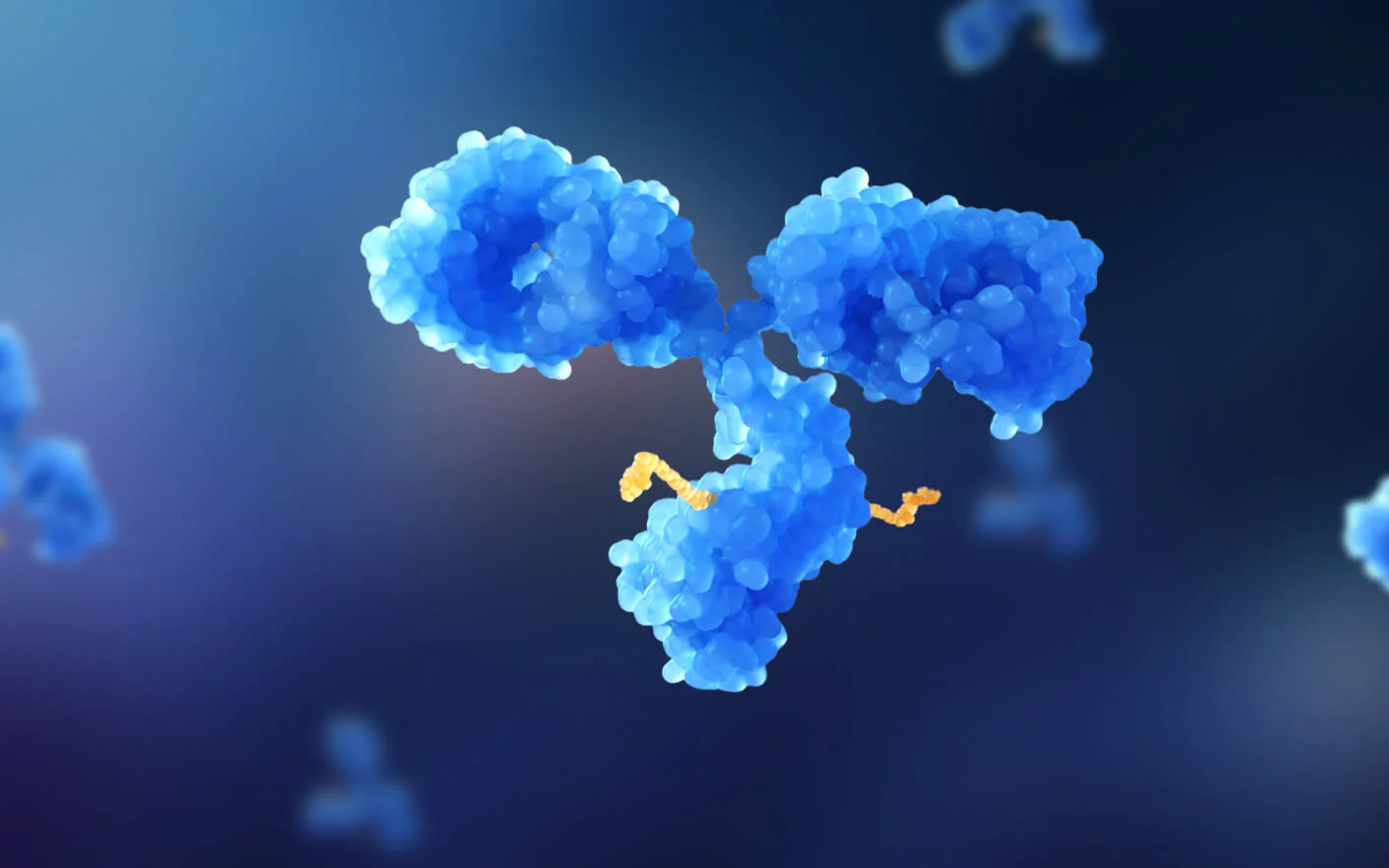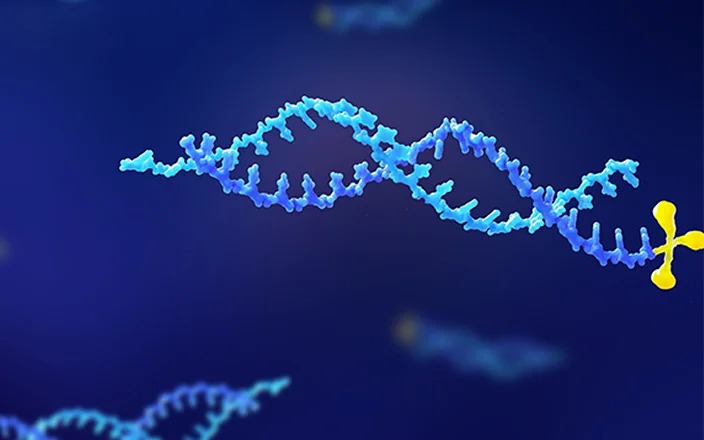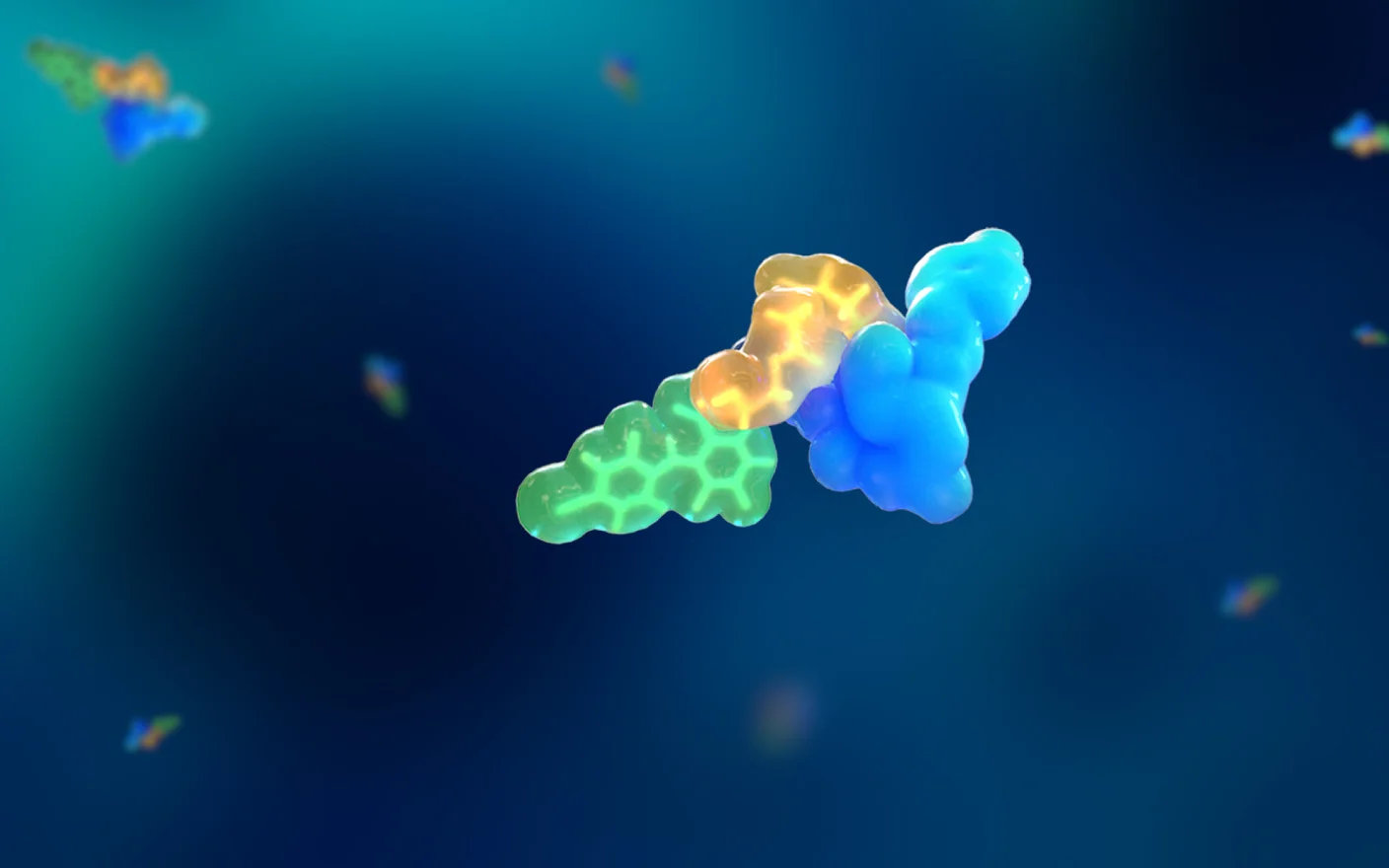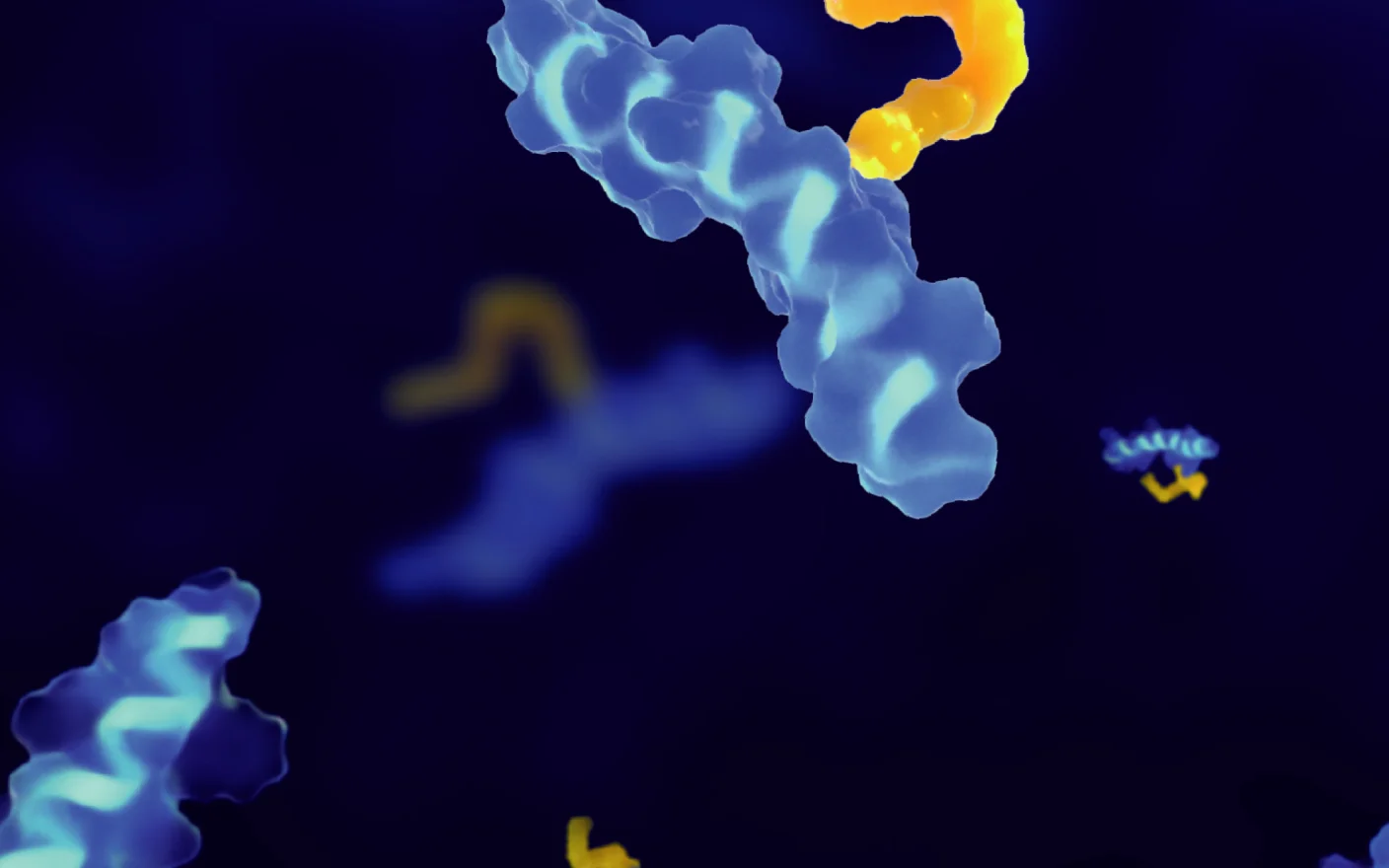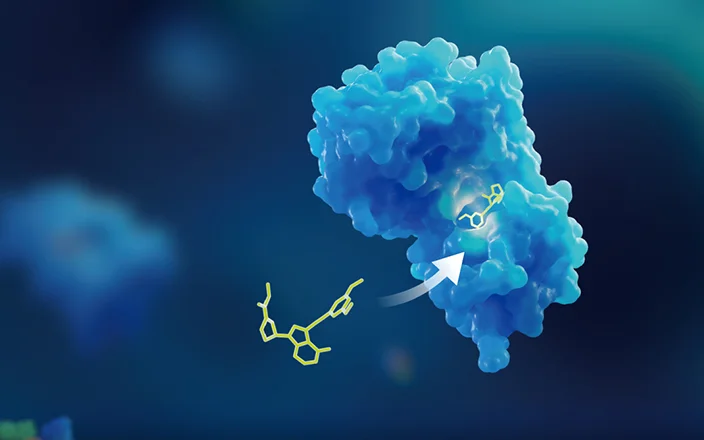Reverse transcription-quantitative polymerase chain reaction (RT-qPCR) has unique advantages in the quantitative analysis of oligonucleotides due to its ultra-high sensitivity, wide linear range, high throughput, and low sample consumption. In addition to detecting variations in the level of target mRNA, it can also be used for pharmacokinetic (PK) analysis of low-concentration samples and quantitative analysis of small interfering RNA (siRNA) loaded into RNA-induced silencing complexes (RISC). This article introduces principles, advantages, challenges, and solutions of relevant RT-qPCR techniques and shares some insights based on experience and case studies of WuXi AppTec DMPK.
1. Principles of oligonucleotide quantitative analysis using RT-qPCR
Quantitative polymerase chain reaction (qPCR) refers to the introduction of fluorophore-labeled probes or nucleic acid dyes in PCR, facilitating real-time analysis of fluorescence signal at each reaction moment. Furthermore, fluorescence signal intensity is proportional to the number of PCR products, enabling the calculation of the amount of initial template and thus facilitating quantitative detection of nucleic acids. qPCR is recognized as one of the standard methods for quantifying nucleic acids harboring known sequences. RT-qPCR is usually used for quantitative analysis of RNA. It works on the principle of converting the RNA template to a complementary DNA (cDNA) using the reverse transcriptase enzyme, followed by the amplification of the cDNA via PCR. In addition, there are also some qPCR technologies that do not require reverse transcription, such as ligase-based qPCR technology.
Oligonucleotides typically consist of 19 to 25 bases, which are too short for designing primers and probes using conventional methods to amplify nucleotide sequences. Therefore, it is necessary to extend the length of the test article and construct a long PCR template for further quantitative analysis using PCR technology. To address this challenge, several methods for lengthening the test nucleic acid sequence have been developed, including the stem-loop RT-qPCR, Poly(A) polymerase tailing-based RT-qPCR, ligation-based RT-qPCR, and primer-extension qPCR. Among these, the stem-loop RT-qPCR and Poly(A) polymerase tailing-based RT-qPCR are more commonly used.
1.1 Quantitative analysis of oligonucleotides using Stem-loop RT-qPCR
Chen et al. first described stem-loop reverse transcription-quantitative polymerase chain reaction (SL-RT-qPCR) in 2005. Stem-loop RT-qPCR differs from conventional RT-qPCR as it involves designing a special reverse transcription primer to directly extend the template in the reverse transcription reaction. This reverse transcription primer is made up of a ‘stem-loop’ structure and a sequence that is complementary to the target oligonucleotide. The reverse transcription primer extends the template chain by pairing with the 3ʹ ~6 nt of target oligonucleotides and synthesizing cDNA under the action of reverse transcriptase. Subsequently, forward and reverse primers and Taqman probes can be designed for the extended cDNA template for amplification and detection. The unique structure of stem-loop primers increases the stability of reverse transcription primers and their target oligonucleotides, thereby reducing non-specific binding to endogenous RNA or DNA. The specially designed 6–8 specific bases pair can also increase sequence specificity and reduce background noise signals. This method can achieve a wide linear range spanning 7–8 orders of magnitude, with the lower limit of quantification (LLOQ) being as low as ~2 pg/mL.

Figure 1. Principle of stem-loop qPCR
1.2 Quantitative analysis of oligonucleotides using Poly(A) polymerase tailing RT-qPCR
Poly(A) polymerase tailing refers to the addition of an oligoadenylate tail to the 3ʹ end of target oligonucleotides under the action of Poly(A) polymerase, followed by reverse transcription generation of cDNA with a universal reverse transcription primer to extend the template sequence. This reverse transcription primer comprises three essential structures: (1) a Poly(T) sequence complementarily paired with the Poly(A) sequence; (2) a universal sequence at the 5ʹ end for binding of the reverse primer to the cDNA during PCR; (3) one or two anchor bases at the 3ʹ end, allowing the reverse transcription primer to specifically bind to the segment of Poly(A) sequence adjacent to target oligonucleotides. Subsequently, PCR amplification can be performed using a specific forward and universal reverse primer, and quantitative detection can be achieved using SYBR Green. The greatest strength of this method is its low cost because it is relatively easy to operate and does not require designing special reverse transcription primers. Additionally, multiple target sequences can be reverse transcribed simultaneously in a single reaction. However, the disadvantage is its poor specificity, which may decrease accuracy.

Figure 2. Principle of PolyA polymerase tailing
1.3 Quantitative analysis of oligonucleotides using Primer-extension qPCR
Primer-extension qPCR involves a primer that contains a 3ʹ end gene-specific sequence and a universal 5ʹ end sequence. It can be used to specifically convert the target oligonucleotide into a cDNA. Subsequently, amplification and detection are performed using a paired universal forward and specific reverse primer with the SYBR Green dye method. The key to this method is a locked nucleic acid (LNA)-modified reverse primer of approximately 15 nt. Two to three of the first eight bases at the 5ʹ end of this reverse primer are replaced with the specially modified nucleic acid analogues. LNA nucleotides contain a methylene bridge that connects the 2ʹ -oxygen of ribose with the 4ʹ -carbon. This bridge results in a locked 3ʹ -endo conformation, reducing the conformational flexibility of the ribose and increasing the local organization of the phosphate backbone without affecting its adherence to the Watson-Crick base-pairing principle; LNA modification exhibits enhanced binding affinity, sequence specificity, thermal stability, and nuclease resistance. This method shows a high dynamic range of 6–7 orders of magnitude with sensitivity in the FM range. However, results may be affected by the non-specific binding by using SYBR Green-based qPCR.

Figure 3. Principle of primer extension
1.4 Quantitative analysis of oligonucleotides using ligation-based qPCR
The method preserves the qPCR process but changes the synthesis process of cDNA. Instead of using reverse transcription, it synthesizes cDNA using DNA ligases, such as T4 DNA ligase or SplintR ligase, which have the capability of filling the gap and constructing complete cDNA without reverse transcription. This method needs two DNA probes with a target oligonucleotide recognition sequence and a pair of forward and reverse PCR primers. In the presence of the RNA sequence, the two probes hybridize to the RNA sequence through base pairing, which is followed by forming a complete, extended-length cDNA template for subsequent PCR quantification using DNA ligase activity. However, DNA ligases may non-specifically bind two DNA probes to form a non-specific amplification signal. Additionally, the efficiency of DNA ligase linking DNA probes using RNA as a template is relatively low, which may affect specificity and sensitivity.

Figure 4. Principle of DNA probe binding method
2. Advantages of RT-qPCR for oligonucleotide quantitative analysis
2.1 Ultra-high detection sensitivity and wide dynamic linear range
RT-qPCR is a molecular biology technique for amplifying specific nucleic acid fragments. It can amplify low copy number targets by millions of times in a short period, thereby providing ultra-high sensitivity. In the detection of oligonucleotide drugs, the LLOQ can reach the pg/mL level, which is much lower than the ng/mL level of mass spectrometry detection. Oligonucleotides exhibit high efficiency and long durations, with rapid elimination rates in plasma and long half-lives in target tissues. For the detection of plasma samples in low-dose groups or long experimental periods, a highly sensitive detection method is necessary. RT-qPCR offers a wide dynamic linear range for quantification, typically over 7–8 orders of magnitude, facilitating the bioanalysis of high- and low-abundance samples.
Key indicators of oligonucleotide pharmacodynamics (e.g., changes in gene silencing effects/associated protein levels in target cells) correlate with exposure of siRNA conjugated with RISC complexes. However, concentrations of RISC-loaded siRNA are usually extremely low, which requires ultra-sensitive detection methods (detection limit < 50 pg/mL). The ultra-high sensitivity of RT-qPCR makes it possible to detect the RISC-loaded siRNA, providing information for intracellular delivery of siRNA and the mechanism of RNA silencing. Moreover, it could establish PD/PK models for key pharmacodynamic indicators and RISC-loaded siRNA, which help design and optimize drugs and predict effective human doses.
2.2 Enabling high throughput sample analysis and reducing the use of biological samples
When preparing an RT-qPCR sample, especially when configuring 96- or 384-well plates, applying high-throughput and high-precision automated liquid handling systems to construct the experimental systems and reaction system allows for avoiding the inhomogeneity caused by manual fatigue operations under a high-pressure environment, reducing experimental errors, and improving sample processing efficiency. Additionally, RT-PCR requires only approximately 10 µL of biological samples, thereby reducing the use of biological samples compared to other assays and facilitating multiple analysis of each sample.
3. Challenges and solutions in using RT-qPCR for oligonucleotide quantification
3.1 Primer and probe design
One difficulty in the development of RT-qPCR methods for oligonucleotide detection lies in primer and probe design. The quality of primers and probes significantly affects assay sensitivity. In terms of SL-RT-qPCR, although universal reverse transcription primers, reverse primers for PCR, and probe sequences are available, forward primers need to be designed specifically based on different oligonucleotide sequences. Short native template sequences limit the selection and length of primers, thus making it hard to meet the Tm-value requirements. In this case, a segment of G or C sequence can be added to the 5ʹ end to bring the Tm value close to 60 °C. Furthermore, it is necessary to prevent the formation of primer-primer and primer-probe dimers, which may lead to non-specific amplification or abnormal results. In addition, it is important to ensure that the Tm values of primer pairs are as close as possible, and the Tm value of the probe is 5-10℃ higher than that of the primer. If generic primers and probes cannot meet these requirements, it is vital to design primers and probes based on the template sequence. In addition, due to the long probe synthesis cycle, two to three primer-probe sets need to be designed for screening during the method development phase, leading to increased costs.
3.2 Harsh operating environment and consumable requirements
Since RT-qPCR assays are very sensitive and can detect only a few copies of the target sequence, they are remarkably influenced by the cleanliness of the environment and consumables. Therefore, it is necessary to strictly avoid aerosol contamination and interference from nucleases during the experimental process.
3.3 Metabolites may affect method accuracy
Although qPCR is sensitive, it lacks perfect specificity for oligonucleotide analytes in biological samples and cannot distinguish full-length oligonucleotides from long-chain metabolites, such as n-1 and n-2. This shortcoming may lead to non-specific amplification owing to the binding of reverse transcription primers to metabolites and the overestimation of the concentration of the target oligonucleotides, thus affecting the accuracy.
3.4 Chemical modifications or carriers may affect sensitivity and accuracy
Studies have shown that several chemically modified sequences, including glycol nucleic acid (GNA)-modified siRNA, reduce the detection sensitivity of RT-qPCR. This is possible because such acyclic hydrocarbon bases with three carbon atoms are not the natural substrates for reverse transcriptase, leading to a decrease in reverse transcription efficiency. Therefore, unique optimization steps are necessary for this type of oligonucleotide, such as changing the ion concentration in the reaction system.
3.5 Lack of guidance from regulatory agencies.
Validation of qPCR/RT-qPCR assays is not currently required by the FDA or NMPA, and there are no uniform standards for experimental design, evaluation processes, and acceptance criteria for sample analysis. Therefore, the acceptance criteria for qPCR/RT-qPCR method validation and sample analysis in clinical and non-clinical studies will vary depending on the scientific understanding of the bioanalytical scientist.
4. Case study: Quantitative analysis of GalNAc-siRNA using SL-RT-qPCR
We developed an SL-RT-qPCR method with ultra-high sensitivity for GalNAc-siRNA quantification in rat plasma and conducted methodological validations of specificity, selectivity, sensitivity, linear range, accuracy, and precision. The method uses a specific stem-loop primer to complementarily hybridize to the antisense strand in the double-strand of GalNAc-siRNA. Subsequently, the extended cDNA is obtained via reverse transcription followed by a TaqMan probe-based qPCR reaction to determine the concentration of the antisense strand. The concentration of GalNAc-siRNA will be acquired based on the antisense strand concentration. This suggests that the method displays good accuracy and precision.
4.1 Standard curve and quantification range
The method exhibits excellent sensitivity and a wide dynamic range, with LLOQ as low as 0.01 ng/mL and a linear range from 0.01–50 ng/mL. The amplification efficiency of the method ranged from 90–110%.

Figure 5. Amplification curves of GalNAc-siRNA in rat plasma samples

Figure 6. Calibration curve of GalNAc-siRNA in rat plasma (0.01–50 ng/mL; R2 = 0.999)
4.2 Accuracy and precision
The range of intra- and inter-batch accuracy for quality control (QC) samples was 78.2–115.2%, and 91.8–100.7%, respectively. The range of intra- and inter-batch precision (%CV) was 2.7–15.0%, and 11.6–12.8%, respectively.
Conclusion
Based on our experience in oligonucleotide drug research, precautions issued by various national drug regulatory authorities, and current literature, WuXi AppTec DMPK has established an experimental system for qPCR/RT-qPCR method development and validation. In addition, we have developed an RT-qPCR bioanalytical method with high sensitivity and excellent accuracy and precision for quantitative bioanalysis of oligonucleotides in biological samples during screening, preclinical PK analysis, and the establishment of PD/PK model.
WuXi AppTec DMPK Non-GLP Bioanalysis Team is equipped with comprehensive oligonucleotide bioanalytical capabilities and has developed five established bioanalytical platforms, including liquid chromatography triple quadrupole mass spectrometry (LC-MS/MS), liquid chromatography-high-resolution mass spectrometry (LC-HRMS), liquid chromatography–fluorescence assay (LC-FL), ligand binding assay (LBA), and quantitative polymerase chain reaction (qPCR). Therefore, we are capable of conducting oligonucleotide bioanalysis from early drug screening to IND application phases. We provide diverse bioanalytical platforms and have extensive experience in the development of oligonucleotide-based methods, which enables high-quality in vivo and in vitro data delivery and accelerates drug development. We focus on developing new analytical capabilities and building a leading preclinical Non-GLP bioanalytical service with the advantages of cross-regional collaboration, large-scale, full-process, and integrated services.

Figure 7. WuXi AppTec DMPK Bioanalytical Platforms for Oligonucleotides
Click here to learn more about the strategies for oligonucleotides, or talk to a WuXi AppTec expert today to get the support you need to achieve your drug development goals.
Authors: Qian Cui, Jiaming Jiang, Nan Zhao, Lili Xing
Committed to accelerating drug discovery and development, we offer a full range of discovery screening, preclinical development, clinical drug metabolism, and pharmacokinetic (DMPK) platforms and services. With research facilities in the United States (New Jersey) and China (Shanghai, Suzhou, Nanjing, and Nantong), 1,000+ scientists, and over fifteen years of experience in Investigational New Drug (IND) application, our DMPK team at WuXi AppTec are serving 1,500+ global clients, and have successfully supported 1,200+ IND applications.
Reference
1.Raymond CK, Roberts BS, Garrett-Engele P, et al. Simple, quantitative primer-extension PCR assay for direct monitoring of microRNAs and short-interfering RNAs[J]. RNA, 2005, 11: 1737-1744. DOI:10.1261/rna.2148705
2.Liu WL, Stevenson M, Seymour LW, et al. Quantification of siRNA using competitive qPCR[J]. Nucleic Acids Res, 2009, 37: e4. DOI:10.1093/nar/gkn903
3.Zhang JY, Li ZP, Wang H, et al. Ultrasensitive quantification of mature microRNAs by real-time PCR based on ligation of a ribonucleotide-modified DNA probe[J]. Chem Commun (Camb), 2011, 47: 9465-9467. DOI:10.1039/c1cc13466c
4.Caifu Chen, Dana A. Ridzon, Adam J. Broomer, Zhaohui Zhou, Danny H. Lee, Julie T. Nguyen, Maura Barbisin, Nan Lan Xu, Vikram R. Mahuvakar, Mark R. Andersen, Kai Qin Lao, Kenneth J. Livak, Karl J. Guegler, Real-time quantification of microRNAs by stem–loop RT–PCR, Nucleic Acids Research, Volume 33, Issue 20, 1 November 2005, Page e179, http://doi.org/10.1093/nar/gni178
5.Castellanos-Rizaldos E, Brown CR, Dennin S, Kim J, Gupta S, Najarian D, Gu Y, Aluri K, Enders J, Brown K, Xu Y. RT-qPCR Methods to Support Pharmacokinetics and Drug Mechanism of Action to Advance Development of RNAi Therapeutics. Nucleic Acid Ther. 2020 Jun;30(3):133-142. doi: 10.1089/nat.2019.0840. Epub 2020 Mar 23. PMID: 32202961.
Related Services and Platforms




-

 DMPK BioanalysisLearn More
DMPK BioanalysisLearn More -

 Novel Drug Modalities DMPK Enabling PlatformsLearn More
Novel Drug Modalities DMPK Enabling PlatformsLearn More -

 Novel Drug Modalities BioanalysisLearn More
Novel Drug Modalities BioanalysisLearn More -

 Small Molecules BioanalysisLearn More
Small Molecules BioanalysisLearn More -

 Bioanalytical Instrument PlatformLearn More
Bioanalytical Instrument PlatformLearn More -

 PROTAC DMPK ServicesLearn More
PROTAC DMPK ServicesLearn More -

 ADC DMPK ServicesLearn More
ADC DMPK ServicesLearn More -

 Oligo DMPK ServicesLearn More
Oligo DMPK ServicesLearn More -

 PDC DMPK ServicesLearn More
PDC DMPK ServicesLearn More -

 Peptide DMPK ServicesLearn More
Peptide DMPK ServicesLearn More -

 mRNA DMPK ServicesLearn More
mRNA DMPK ServicesLearn More -

 Covalent Drugs DMPK ServicesLearn More
Covalent Drugs DMPK ServicesLearn More
Stay Connected
Keep up with the latest news and insights.





